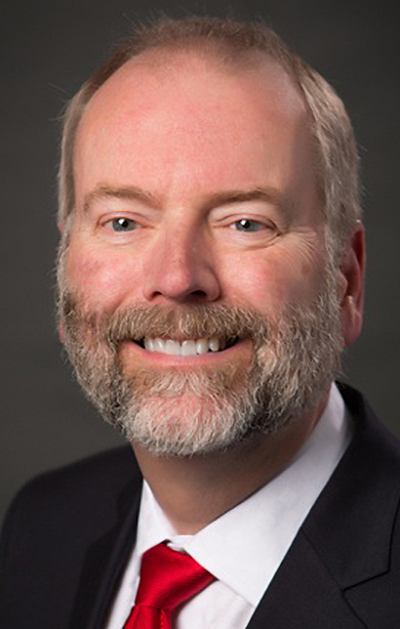Clinical laboratories that help patients access care more quickly could prevent declines in test orders and physician referrals
Millennials are increasingly opting to visit urgent-care centers and walk-in healthcare clinics located in retail establishments. And those choices are changing the healthcare industry, including clinical laboratories and anatomic pathology groups, which traditionally have been aligned with the primary care model.
However, research published in JAMA Internal Medicine suggests outpatients with primary care doctors have better healthcare experiences and receive “significantly more” high-value care. These findings come on the heels of a Kaiser Family Foundation (KFF) Health Tracking Poll which revealed that 26% of 1,200 adults surveyed did not have primary care physicians. And of the millennials polled (ages 18-29), nearly half (45%) had no primary care provider.
Why is this important? High-value care include many diagnostic and preventative screenings that involve clinical laboratory testing, such as colorectal and mammography cancer screenings, diabetes, and genetic counseling.
And, as Dark Daily reported in “Millennials Forge New Paths to Healthcare, Providing Opportunities for Clinical Laboratories,” the increasing popularity of retail-based walk-in clinics and urgent-care centers among millennials means traditional primary care is not meeting their needs. That’s in large part because of time.
And, this is where clinical laboratories can help.
In the Millennial’s World, Convenience Is King
Millennials are Americans born between the early 1980s to late 1990s (AKA, Gen Y). And, as Dark Daily reported, they value convenience, saving money, and connectivity. Things they reportedly do not associate with traditional primary care physicians.
According to the KFF poll:
- 45% of 18 to 29-year-olds,
- 28% of 30 to 49-year-olds,
- 18% of 50 to 64-year-olds, and
- 12% of those age 65 and older, have no relationship with a primary care provider.
Thus, it’s not just millennials who are not seeing primary care doctors. They are just the largest age group.
When this many people skip visits to primary care doctors, medical laboratories may see a marked decline in test volume. Furthermore, shifting consumer preferences and priorities means clinical laboratories need to reach out and serve all healthcare consumers, not just millennials, in new and creative ways.

Consider Changes in Lab Business Model
Dark Daily advises clinical laboratory leaders to consider changes in how they do business to better serve busy consumers. Here are a few ways to appeal to people of all ages who seek value, fast service, and connectivity:
- Offer walk-in testing with no appointments.
- Create easy-to-navigate online scheduling tools.
- Enable patients to request tests without doctors’ orders as the lab’s market allows.
- Make results quickly available and in easy-to-understand reports.
- Post test results online for patients to securely access in patient portals.
- Make it easy to interact with personnel or receive information through lab websites.
- Collaborate with telehealth providers.
- Post prices of the most commonly ordered tests.
- Use social media to promote the lab and respond to online reviews.
Younger Americans Do Not Perceive Value of Primary Care
The JAMA researchers studied 49,286 adults with primary care and 21,133 adults without primary care between 2012 and 2014. The methodology entailed:
- 39 clinical quality measures,
- Seven patient experience measures, and
- 10 clinical quality composites (six high-value and four low-value services).
“Americans with primary care received significantly more high-value care, received slightly more low-value care, and reported significantly better healthcare access and experience,” the JAMA authors wrote.
Healthcare Dive notes that the JAMA study may be the first time researchers have substantiated the higher value of primary care, which generally provides services for:
- Cancer screening (colorectal and mammography),
- Diagnostic and preventive testing,
- Diabetes care, and
- Counseling.
“Poor primary care supply or access may be hurdles, or some Americans do not perceive the potential value of primary care, particularly if they are younger … and healthier,” the JAMA researchers noted.
An earlier study published in JAMA Internal Medicine titled, “Comparison of Antibiotic Prescribing in Retail Clinics, Urgent Care Centers, Emergency Departments, and Traditional Ambulatory Care Settings in the United States,” suggests that prescriptions for antibiotics written to patients that visit non-traditional healthcare settings are increasing.
The study found that “Only 60% of outpatient antibiotic prescriptions dispensed in the United States are written in traditional ambulatory care settings [defined as medical offices and emergency departments]. Growing markets, including urgent care centers and retail clinics, may contribute to the remaining 40%.”
A Washington Post analysis of this JAMA study reports that “nearly half of patients who sought treatment at an urgent-care clinic for a cold, the flu, or a similar respiratory ailment left with an unnecessary and potentially harmful prescription for antibiotics, compared with 17% of those seen in a doctor’s office.”
This drives home the importance of having a primary care doctor.
“Antibiotics are useless against viruses and may expose patients to severe side effects with just a single dose,” notes Kevin Fleming, Chief Executive Officer of Loyale Healthcare, a healthcare financial technology company, in its analysis of the earlier JAMA study. “Care that’s delivered on a per-event basis by an array of unrelated providers can’t match the continuity of care that is achievable when a patient receives holistic care within the context of a longer-term physician relationship,” he concluded.
Clinical laboratory leaders and pathologists are advised to regularly engage with primary care physicians—not just oncologists and other specialists—and keep them informed on what the lab is doing to better attract millennials and develop long-term relationships with them based on their values.
—Donna Marie Pocius
Related Information:
For Millennials, a Regular Visit to the Doctor’s Office is not a Primary Concern
JAMA Study Makes Case for Investing in Primary Care
Millennial Expectations Fundamentally Changing Healthcare Landscape
Millennials Forge New Paths to Healthcare, Providing Opportunities for Clinical Laboratories –



